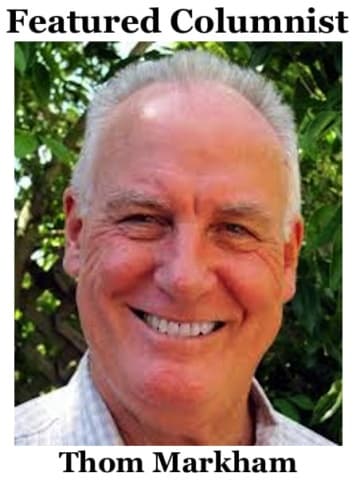Workshops are only the first step
 Trainers from high performing industries know that training drives potential, not ultimate competency. The process begins with training, but competency in complex tasks results from self-directed performance continuously augmented by job experience, peer support, and additional training targeted to the specific needs of the job or individual. When those conditions are in place, skillfulness becomes embedded in the culture of the workplace and organizations turn the corner on sustained capability.
Trainers from high performing industries know that training drives potential, not ultimate competency. The process begins with training, but competency in complex tasks results from self-directed performance continuously augmented by job experience, peer support, and additional training targeted to the specific needs of the job or individual. When those conditions are in place, skillfulness becomes embedded in the culture of the workplace and organizations turn the corner on sustained capability.
It’s little wonder that PBL doesn’t thrive, or sometimes survive, unless schools adopt this mindset when it comes to training teachers. Teaching through project based learning qualifies as a very complex task. A workshop or conference introduces the craft, but teachers become competent only through a supportive ecosystem.
 Approaching PBL training with a comprehensive strategic mindset suffers from two limitations. Money and time for PD are always at a premium. But even more limiting is the self-imposed mentality of the one-off workshop, in which an expert roams the front of the room and explains the bullets on a PowerPoint — and then leaves.
Approaching PBL training with a comprehensive strategic mindset suffers from two limitations. Money and time for PD are always at a premium. But even more limiting is the self-imposed mentality of the one-off workshop, in which an expert roams the front of the room and explains the bullets on a PowerPoint — and then leaves.
Fortunately, there are now solutions to these issues, and it is now possible for every district to replace old-style training with a strategic focus on sustaining PBL. First, virtually every educator, particularly district administrators who cringe at the high costs of training and lack of effectiveness, have finally agreed that workshops may not be the most productive way to make professional learning stick. As the new ESSA or Learning Forward guidelines for PD underscore, job embedded and continuous opportunity to grow are quickly replacing the old one-off experience.
Second, digital platforms that offer a rich, deep, and social experience for teacher learning are in place — a development that has happened only in the last two years. These platforms make MOOC’s and webinars look like dinosaurs; they offer an interactive means to drive teacher potential by offering essential information, testing the learning, opening users to questions and further learning — the essence of self-direction — and empowering teachers to become active, informed participants in a professional community that sustains growth.
Almost counterintuitively, this digital experience drives teachers deeper into the topic. Listening to an expert requires less effort than digging into a challenging online course. But to the bottom line: Online learning doesn’t require setting aside special PD days with high-priced trainers or taking precious workdays in August or bringing in an army of subs for the day. It’s amazingly cost-effective.
So, how do these new developments get incorporated into high quality, ongoing PBL professional learning? A coherent plan focuses on seven elements that make up a comprehensive ‘phigital’ experience that blends online and onsite learning:
Create a shared knowledge platform. The momentum for PBL in a school or district often starts with a face-to-face workshop or conference attended by key leaders and teachers. That’s great. But PBL needs to be part of the knowledge and skill set of every teacher in the school, including foreign language, music, and career tech. Sustainability in PBL requires a cultural shift and philosophical alignment. Enroll every teacher in online training for PBL. This is the shared knowledge base necessary for the staff-wide conversation that results in sustainability.
Kickoff and orientation. There is an illusion that older teachers resist going online and younger teachers embrace it. That’s tech mythology. The reality is that high fliers exist in all age groups but that everyone needs to see how the platform operates and grasp the opportunity for group as well as individual growth. Online learning at this depth is new, even in other industries. It takes time to set up.
 Train coaches. The road to competency requires constant conversation, testing of ideas, and debriefs. Coaches who have deep training in PBL are immensely helpful. This is a middle management, teacher leader position that many districts do not have. But they play a critical role in supporting progress, monitoring, and setting milestones for course completion.
Train coaches. The road to competency requires constant conversation, testing of ideas, and debriefs. Coaches who have deep training in PBL are immensely helpful. This is a middle management, teacher leader position that many districts do not have. But they play a critical role in supporting progress, monitoring, and setting milestones for course completion.
Remote coaching. Both teachers and coaches require help. PBL has many moving parts and is a complex craft for a teacher. Back up the coaches with a PBL expert who can advise the coaches and troubleshoot projects. It’s like having a lawyer on retainer—and it’s necessary.
Revisit. There is a predictable flow chart for implementing PBL that mirrors the Forming, Norming, Storming, and Performing sequence. Early projects will fail and teachers who start out with great enthusiasm may feel frustrated. The challenge of transforming from front of the room education to student centered problem-solving involves thinking like a designer, not a lesson planner, and redefining old notions of rigor. The depth of this challenge continues to be vastly under-estimated by education. Planning for failure is part of success.
 Train a new cadre. Sustainability requires emerging leaders. Look for teachers who do PBL very well and create opportunities for them to share and support. Add them to the coaching mix with informal coaching opportunities. Use the new cadre to build out teams that know how to use protocols and analyze projects.
Train a new cadre. Sustainability requires emerging leaders. Look for teachers who do PBL very well and create opportunities for them to share and support. Add them to the coaching mix with informal coaching opportunities. Use the new cadre to build out teams that know how to use protocols and analyze projects.
Plan for new staff. Sustainability won’t happen if one third or one half of the staff doesn’t know PBL. That can happen over a year or two with staff turnover. Every new teacher needs to be ‘inducted’ into the PBL culture. How? Go back to the online and require every new hire to enroll in the online PBL course — the perfect, easy cost solution to keeping PBL at the forefront of the school.
Author
Founder of PBL Global and a leading author, psychologist, and respected international school consultant, Thom Markham has assisted over 350 schools and 6000+ teachers across five continents in implementing project-based learning, 21st-century competencies, and successful inquiry-based systems of teaching and learning.
PBL Global offers a hybrid cost-effective, teacher-effective approach to professional learning for PBL that integrates a powerful library of online courses, staff coaching, and teacher support. Email thom@pblglobal.com or follow him on
Further Reading
- Stillwater News Press – Teachers spend part of summer in class
- Inlander – Spokane schools are trying a nontraditional teaching method called PBL
- EdSurge – Amidst Opioid Addiction, Plummeting Morale, One Elementary School Reinvents Itself


